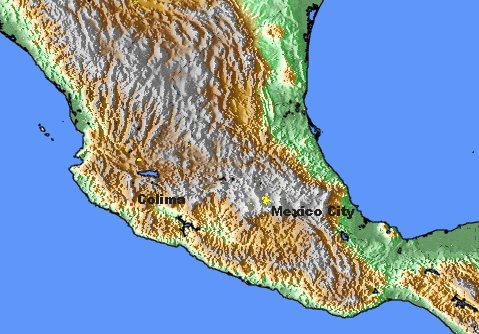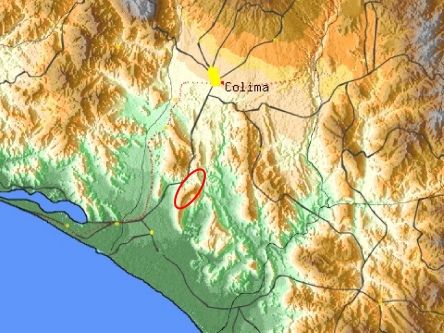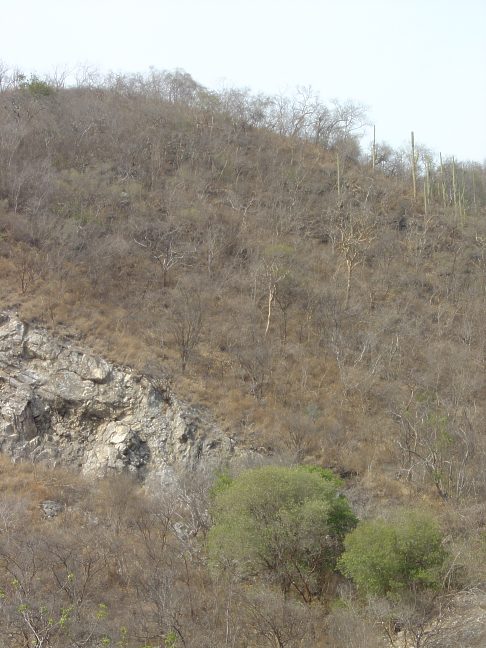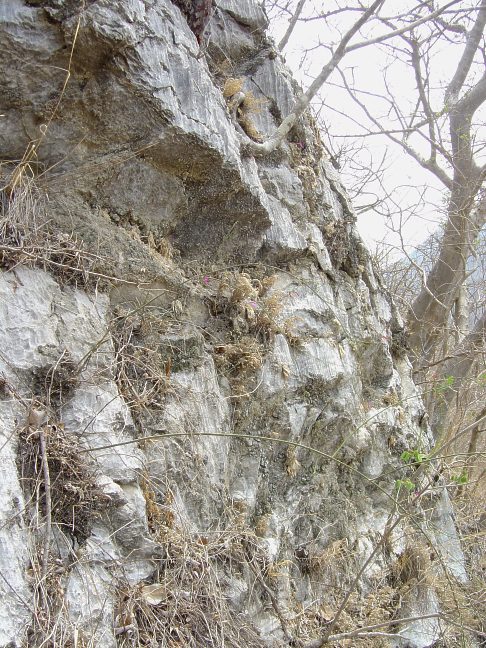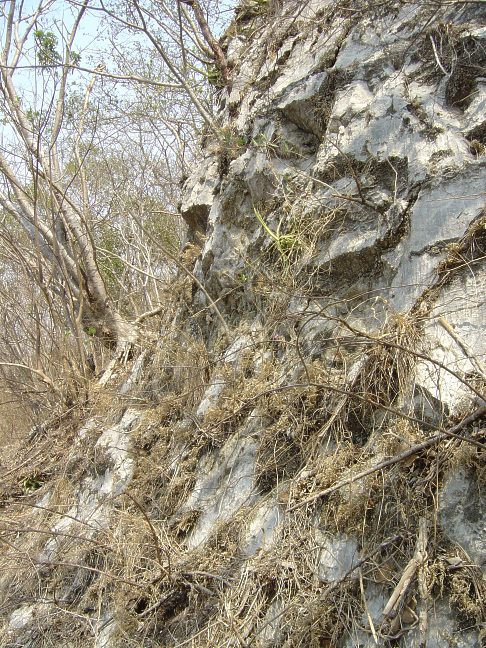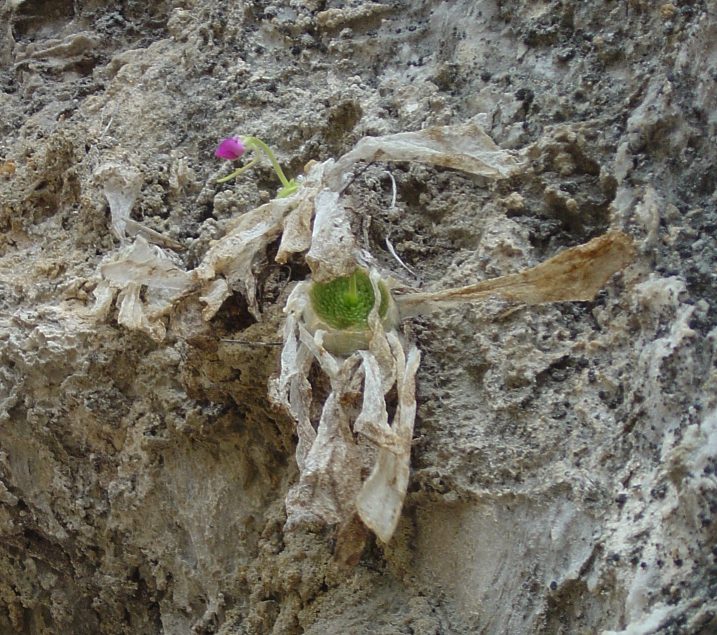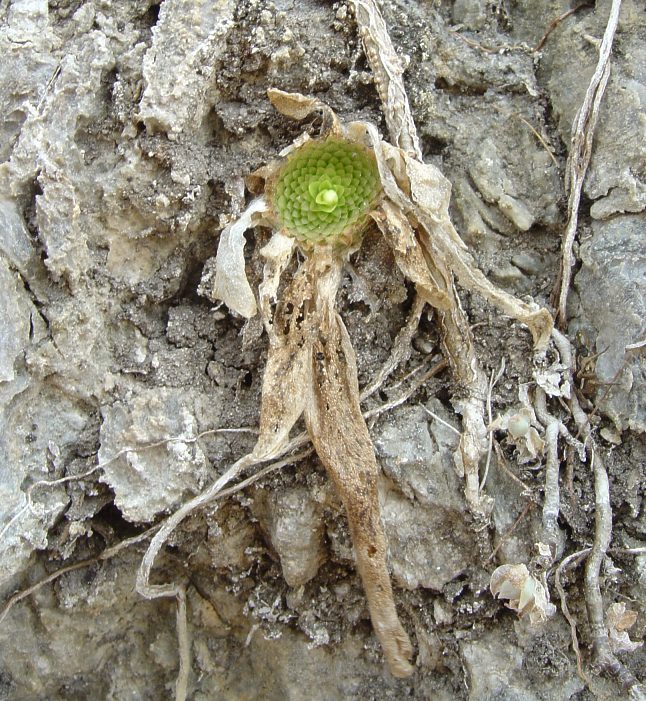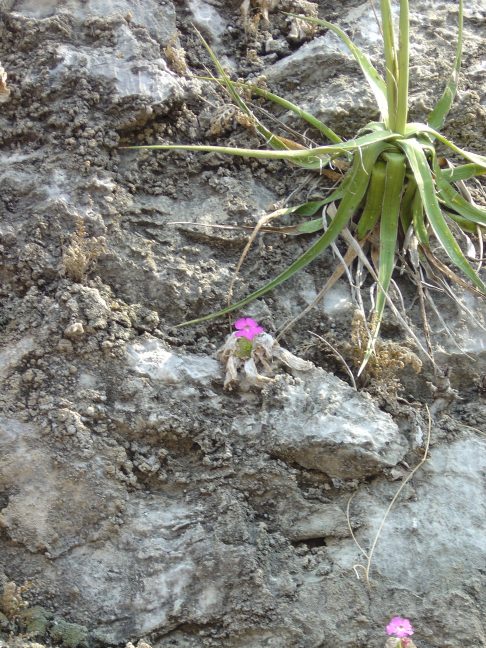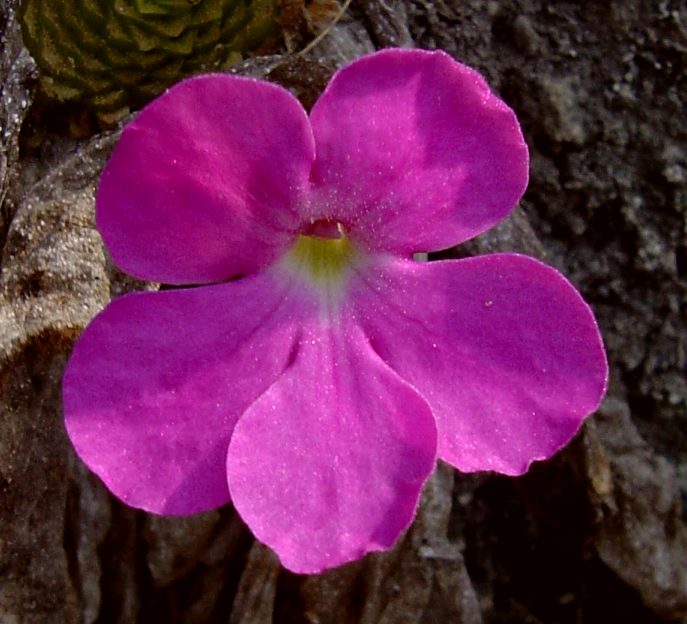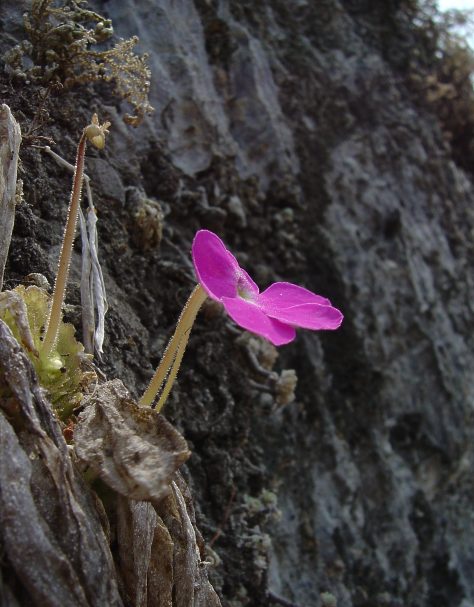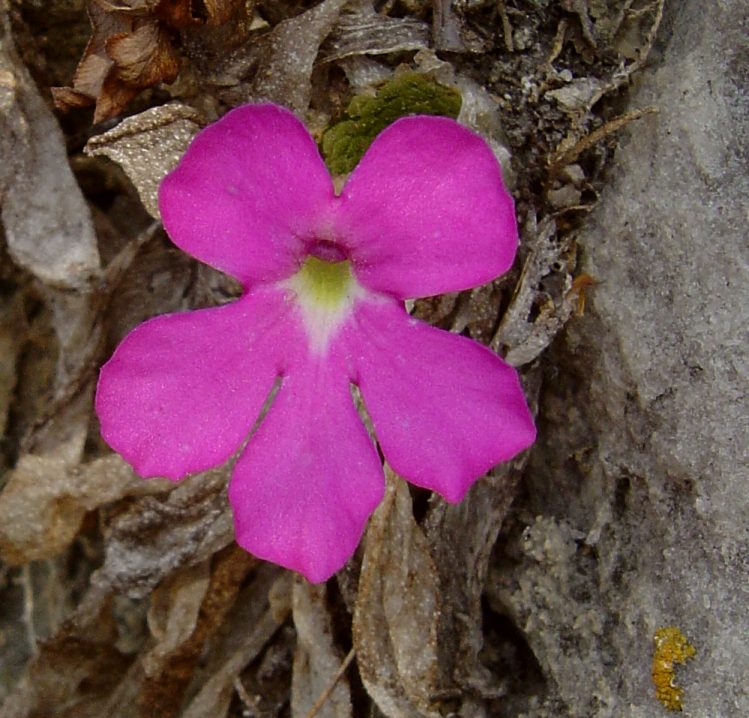
Oliver Gluch's World of Carnivorous Plants or: "What you always wanted to know about butterworts" |
| Impressum |

| Home | Origin | Prey | Species | Plant Purchase | Other Carnivorous Plants | Info about Carnivorous Plants | About me |
Pinguicula colimensis McVaugh & Mickel (1963)One
of
the most beautiful species within the genus Pinguicula
grows in Mexico and was described in 1963 for the first
time by the 2 American botanists McVaugh und Mickel.
Even collected many times before, plants of this species
were considered as being P. macrophylla or P.
moranensis. P. colimensis is found south of
the city of Colima and seems to be restricted to that
small area.
From
all
known Mexican butterwort species P. colimensis
occurs on the lowest altitude (between 350 and 450 m
a.s.l.). The plants grow on north facing, semi-shady or
shady, vertical gypsum cliffs. The predominant
vegetation type there is the " bosque tropical
caudifolia", a tropical forest, where the trees and
shrubs lose their leaves during the dry season in
winter/spring and form new leaves when the rainy season
begins. The typical species of that forest are Hechtia
laevis, Selaginella lepidophylla, ferns (Cheilanthes
sp., Bommeria sp.) and sporadically also
cacti.
The difference to all othe species belonging to the
section Orcheosanthusis obvious when the summer
leaves are regarded, because the margins of the leaves
are slightly downturned. The summer rosette consists of
up to 10 pale green leaves, being elliptic to obovate
and up to 12 cm long. Spectacular are also the glands on
the upper side of the leaves. They count amongst the
largest glands within Pinguicula species.
Leaves
of
the winter rosette are spatulate and about 2 cm long and
2 to 5 mm wide, forming a compact rosette. The winter
rosette can easily consist of 70 to 130 leaves. In
comparison to P. macrophylla the rosette is not
"onion like", because the outermost leaves of P.
colimensis do not cover all other leaves. The size
of the winter rosette can reach a size of 2 to 3.5 cm in
diameter. Also typical for the winter rosette of P.
colimensis are the long white hair of leaves,
cocoon like, keeping the rosette together.
The
corolla
is divided into two lips and the colour is of an
intensive pink, if exposed to direct sunlight the flower
shows a metallic aspect. The flower fits into section Orcheosanthus
(like P. moranensis), having a very short tube
and a very long spur. The upper lip consists of two
obovate lobes, which are often half of size compared to
the 3 lobes of the lower lip. In total the size of the
corolla measures about 3.5 cm in diameter. The spur can
reach up to 4 cm. During one season up to 5 flower
scapes can appear, occuring together with or before the
first summer leaves in May.
Cultivation of P. colimensis is not to easy. In winter substrate should be kept almost dry, so that the winter leaves do not begin to rot, because the winter rosette is partly buried in the soil. In spring it is recommended to begin with relatively few dosages of water, so that the soil is getting only damp. With the appearance of the first summer leaves, substrate can be kept wet during summer. As substrate I use a mix of calcareous loam and fine sand. |
